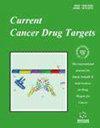The HGF/Met Receptor Mediates Cytotoxic Effect of Bacterial Cyclodipeptides in Human Cervical Cancer Cells
IF 2.3
4区 医学
Q3 ONCOLOGY
引用次数: 0
Abstract
Background: Human cervix adenocarcinoma (CC) caused by papillomavirus is the third most common cancer among female malignant tumors. Bioactive compounds such as cyclodipeptides (CDPs) possess cytotoxic effects in human cervical cancer HeLa cells mainly by blocking the PI3K/Akt/mTOR pathway and subsequently inducing gene expression by countless transcription regulators. However, the upstream elements of signaling pathways have not been well studied. Methods: To elucidate the cytotoxic and antiproliferative responses of the HeLa cell line to CDPs by a transcriptomic analysis previously carried out, we identified by immunochemical analyses, differential expression of genes related to the hepatocyte growth factor/mesenchymal-epithelial transition factor (HGF/MET) receptors. Furthermore, molecular docking was carried out to evaluate the interactions of CDPs with the EGF and MET substrate binding sites. Results: Immunochemical and molecular docking analyses suggest that the HGF/MET receptor participation in CDPs cytotoxic effect was independent of the protein expression levels. However, protein modulation of downstream Met-targets occurred due to the inhibition of phosphorylation of the HGF/MET receptor. Results suggest that the antiproliferative and cytotoxicity of CDPs in HeLa cells involve the HGF/MET receptor upstream of PI3K/Akt/mTOR pathway; assays with the human breast cancer MCF-7 and MDA-MB-231cell lines supported the finding. Conclusion: Data provide new insights into the molecular mechanisms involved in CDPs cytotoxicity and antiproliferative effects, suggesting that the signal transduction mechanism may be related to the inhibition of the phosphorylation of the EGF/MET receptor at the level of substrate binding site by an inhibition mechanism similar to that of Gefitinib and foretinib anti-neoplastic drugs.HGF/Met 受体介导细菌环二肽对人类宫颈癌细胞的细胞毒性作用
背景:由乳头瘤病毒引起的人类宫颈腺癌(CC)是女性恶性肿瘤中第三大常见癌症。环二肽(CDPs)等生物活性化合物主要通过阻断 PI3K/Akt/mTOR 通路,随后通过无数转录调节因子诱导基因表达,从而对人类宫颈癌 HeLa 细胞产生细胞毒性作用。然而,对信号通路的上游元件尚未进行深入研究。研究方法为了通过之前进行的转录组分析阐明 HeLa 细胞系对 CDPs 的细胞毒性和抗增殖反应,我们通过免疫化学分析确定了与肝细胞生长因子/间质上皮转化因子(HGF/MET)受体相关的基因的差异表达。此外,我们还进行了分子对接,以评估 CDP 与 EGF 和 MET 底物结合位点的相互作用。结果:免疫化学和分子对接分析表明,HGF/MET受体参与CDPs细胞毒性作用与蛋白表达水平无关。然而,由于抑制了 HGF/MET 受体的磷酸化,下游 Met 靶点的蛋白质发生了调节。结果表明,CDPs 在 HeLa 细胞中的抗增殖作用和细胞毒性涉及 PI3K/Akt/mTOR 通路上游的 HGF/MET 受体;用人类乳腺癌 MCF-7 和 MDA-MB-231 细胞系进行的试验也支持这一结论。结论数据为 CDPs 细胞毒性和抗增殖作用的分子机制提供了新的见解,表明信号转导机制可能与抑制 EGF/MET 受体在底物结合位点水平上的磷酸化有关,其抑制机制类似于吉非替尼和福瑞替尼抗肿瘤药物的抑制机制。
本文章由计算机程序翻译,如有差异,请以英文原文为准。
求助全文
约1分钟内获得全文
求助全文
来源期刊

Current cancer drug targets
医学-肿瘤学
CiteScore
5.40
自引率
0.00%
发文量
105
审稿时长
1 months
期刊介绍:
Current Cancer Drug Targets aims to cover all the latest and outstanding developments on the medicinal chemistry, pharmacology, molecular biology, genomics and biochemistry of contemporary molecular drug targets involved in cancer, e.g. disease specific proteins, receptors, enzymes and genes.
Current Cancer Drug Targets publishes original research articles, letters, reviews / mini-reviews, drug clinical trial studies and guest edited thematic issues written by leaders in the field covering a range of current topics on drug targets involved in cancer.
As the discovery, identification, characterization and validation of novel human drug targets for anti-cancer drug discovery continues to grow; this journal has become essential reading for all pharmaceutical scientists involved in drug discovery and development.
 求助内容:
求助内容: 应助结果提醒方式:
应助结果提醒方式:


